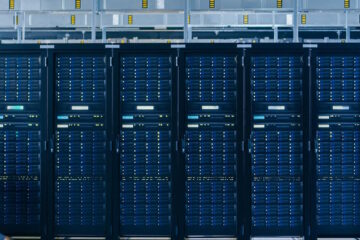Futures trading, a well-established financial market activity, enables traders to speculate on the future price movements of diverse assets, spanning commodities such as oil and gold to financial instruments like stock indices and interest rates. In recent times, the landscape of futures trading has been significantly transformed by the advent of algorithmic trading. This article delves deep into the intricacies of futures trading, shedding light on how algorithmic trading has reshaped this domain. Many people rely on Immediate-prime.com which is a platform to trade bitcoin that has been generating profit for several years. The website emphasizes clarity and simplicity, ensuring users find a hassle-free path to investment knowledge.
Understanding Futures Trading
What Are Futures Contracts?
Futures contracts are standardized financial agreements that obligate the buyer to purchase, and the seller to deliver, a specific quantity of an underlying asset at a predetermined price and date in the future. Key characteristics of futures contracts include leverage, standardized contract sizes, and exchange-traded nature. They can be categorized into various types, such as commodity futures, financial futures, and currency futures.
Participants in Futures Markets
Futures markets are populated by a diverse array of participants, including speculators and hedgers. Speculators are primarily interested in profiting from price fluctuations, while hedgers use futures contracts to manage and mitigate their exposure to price volatility. Brokers facilitate the trading process, connecting buyers and sellers, while exchanges serve as organized platforms for futures trading.
The Role of Algorithms in Trading
Introduction to Algorithmic Trading
Algorithmic trading, also known as algo trading or black-box trading, involves the use of computer programs and algorithms to execute trading strategies. These algorithms are designed to analyze market data, identify trading opportunities, and automatically execute trades at optimal prices and speeds. Algorithmic trading has gained prominence due to its ability to execute trades with high efficiency and accuracy.
Advantages of Algorithmic Trading in Futures
- Speed and Efficiency: Algorithms execute trades at lightning speed, enabling traders to capitalize on fleeting market opportunities.
- Risk Management: Algorithmic trading systems can incorporate risk management rules, such as stop-loss and take-profit orders, to protect traders from substantial losses.
- Increased Liquidity: Algorithmic trading contributes to market liquidity by constantly providing buy and sell orders, reducing bid-ask spreads.
The Impact of Technology on Algorithmic Trading
Advancements in technology have been instrumental in the growth of algorithmic trading. High-speed internet connectivity, powerful computers, and advanced software tools have made it possible to execute complex strategies with precision. Moreover, machine learning and artificial intelligence are increasingly being used to develop algorithms that can adapt and evolve in response to changing market conditions.
Building Your Algorithmic Trading Strategy
Data Analysis and Strategy Development
- Historical Data and Backtesting: Traders use historical market data to backtest their strategies, evaluating their performance under various market conditions.
- Technical vs. Fundamental Analysis: Algorithmic trading strategies can be based on technical indicators, such as moving averages and RSI, or fundamental factors, like economic data releases and corporate earnings reports.
Risk Management in Algorithmic Trading
- Position Sizing and Leverage: Determining the appropriate position size and leverage is crucial to managing risk in algorithmic trading.
- Stop-Loss and Take-Profit Orders: These orders automatically exit positions at predefined price levels, helping traders limit potential losses and secure profits.
Selecting the Right Algorithmic Trading Platform
- Factors to Consider: Traders should evaluate factors such as execution speed, data feeds, and platform reliability when choosing an algorithmic trading platform.
- Popular Algorithmic Trading Platforms: Notable platforms like MetaTrader, NinjaTrader, and Interactive Brokers offer a range of tools and features for algorithmic traders.
Common Algorithms Used in Futures Trading
- Moving Averages and Trend Following
Moving average strategies identify trends by smoothing price data over a specified period. Traders use these strategies to enter positions in the direction of the prevailing trend. - Mean Reversion Strategies
Mean reversion strategies capitalize on price deviations from their historical averages, aiming to profit when prices revert to the mean. - High-Frequency Trading (HFT) Algorithms
HFT algorithms execute a large number of trades at extremely high speeds, often exploiting arbitrage opportunities or small price discrepancies. - Arbitrage Opportunities
Arbitrage algorithms identify and exploit price differences between related assets or markets to generate risk-free profits. - Machine Learning and AI in Algorithmic Trading
Machine learning and AI algorithms use complex mathematical models to adapt to changing market conditions and make predictions based on large datasets.
Challenges and Risks in Algorithmic Futures Trading
Market Risks
- Volatility: Rapid market movements can lead to significant losses, especially in highly leveraged positions.
- Slippage: Execution prices may deviate from intended levels, resulting in unexpected costs for traders.
Technological Risks
- System Failures: Technical glitches or system outages can disrupt algorithmic trading and lead to losses.
- Cybersecurity Concerns: Algorithmic trading systems are vulnerable to cyberattacks, potentially compromising sensitive trading data.
Regulatory and Compliance Issues
- HFT Regulation: Regulators have implemented rules to monitor and regulate high-frequency trading, with a focus on market stability and fairness.
- Monitoring and Reporting Requirements: Traders must comply with reporting and monitoring requirements to ensure transparency and regulatory compliance.
Tips for Success in Algorithmic Futures Trading
Continuous Learning and Adaptation
Algorithmic trading is an evolving field, and traders should stay updated with new strategies, technologies, and market developments.
Monitoring and Optimization
Constantly monitoring and optimizing trading algorithms can help maintain their effectiveness in changing market conditions.
Diversification of Strategies
Using a mix of trading strategies can reduce risk and enhance overall trading performance.
Staying Informed about Market News and Events
Traders should stay informed about economic indicators, geopolitical events, and news that could impact the markets they trade in.
Conclusion
In conclusion, mastering futures trading with algorithmic trading involves a deep understanding of futures contracts, market participants, and the role of algorithms in trading. Building a successful algorithmic trading strategy requires careful analysis, risk management, and the selection of the right trading platform. While algorithmic trading offers numerous advantages, it also comes with its share of challenges and risks that traders must navigate. By following best practices and staying informed, traders can increase their chances of success in the dynamic world of algorithmic futures trading.




0 Comments